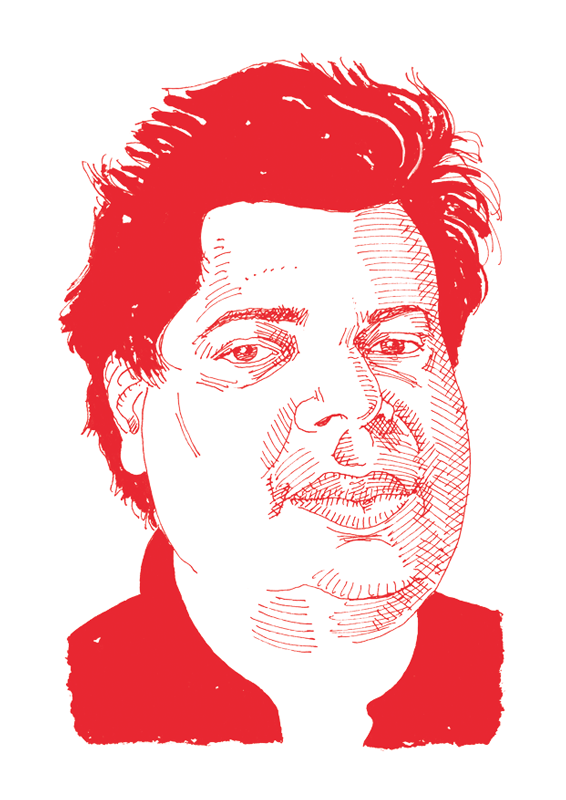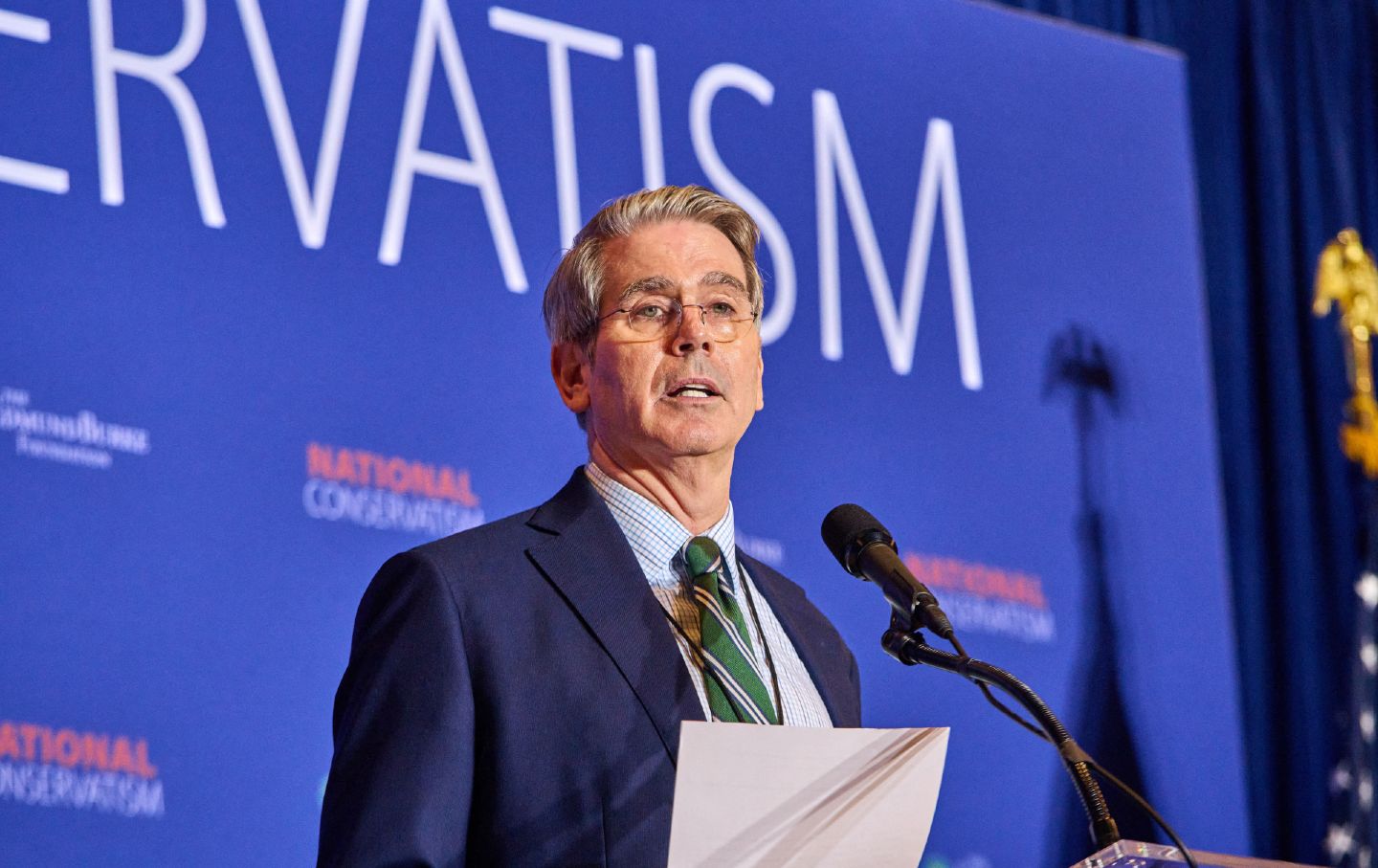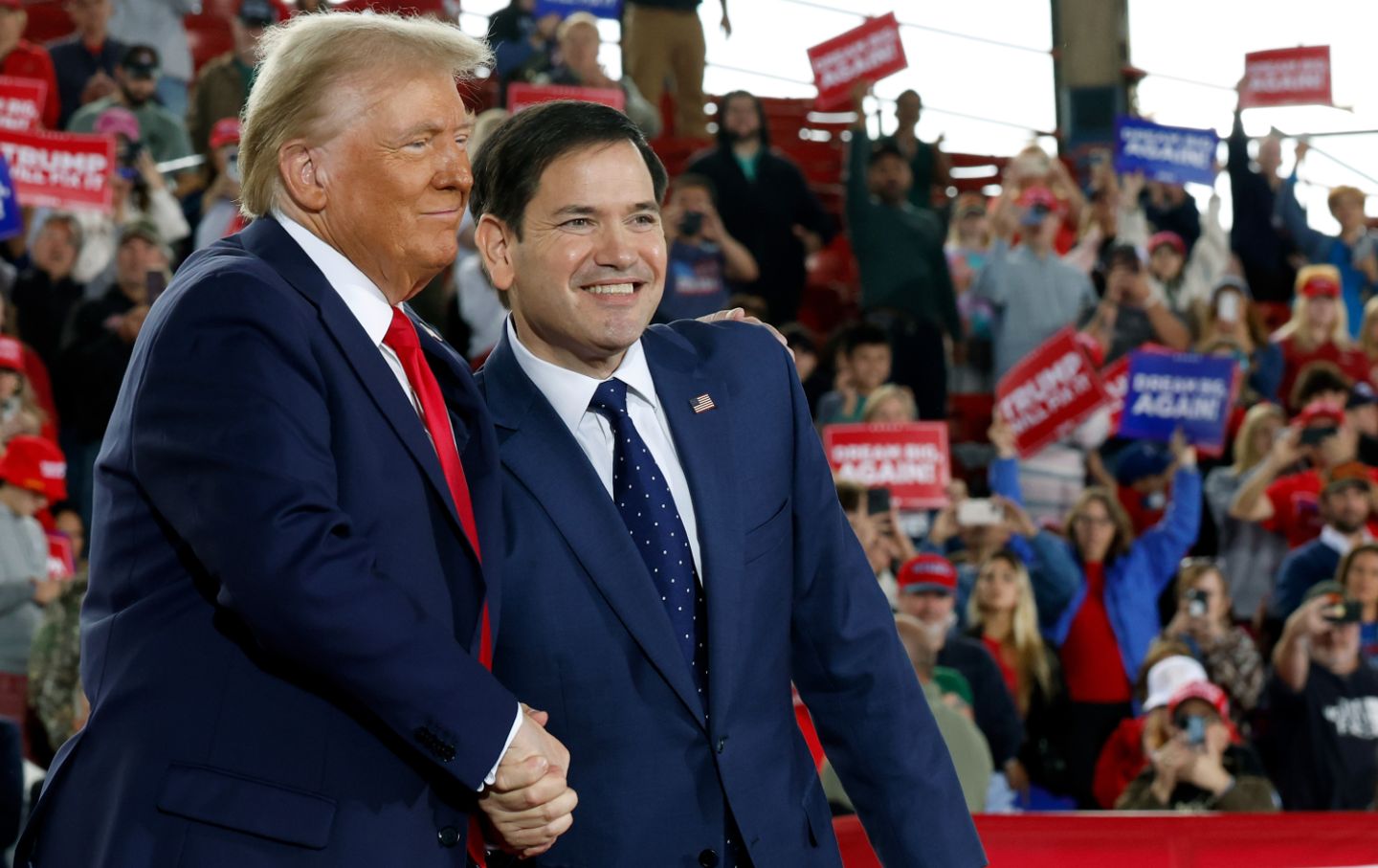Campus Protesters Were Right to Spurn Peggy Noonan, Emblem of Media Obtuseness
Our narcissistic media elite doesn’t understand why their lies have made young people wary.

The first important fact about Peggy Noonan is that she belongs to the media aristocracy: a former speechwriter for Ronald Reagan and George H.W. Bush (for whom she coined the famous phrase “a thousand points of light”—or lifted it from the poet W.H. Auden), Noonan has held a prominent perch as a pontificator for network news programs and as a columnist for The Wall Street Journal, in which capacity she won a Pulitzer Prize in 2017. The second important fact about Noonan is that she’s a dingbat—a daft writer whose columns often amount to free-associative rantings.
The alarming degree to which Noonan is unmoored from reality was made clear in a Journal column she wrote in 2000 about the divisive case of Elián González, a 6-year old Cuban boy who had turned up the previous year in Florida in an inner tube. González had been set to sea from Cuba by his mother, who died in the journey. González’s father remained in Cuba and wanted his son returned, a move opposed by the boy’s more distant family, which was based in Florida. The Clinton administration, following the law on family reunification, sent federal officers to seize González from his American family and returned him to his father.
Noonan described the story in religious terms, with Bill Clinton as a God-hater who defied divine law. According to Noonan,
From the beginning it was a story marked by the miraculous. It was a miracle a six-year-old boy survived the storm at sea and floated safely in an inner tube for two days and nights toward shore; a miracle that when he tired and began to slip, the dolphins who surrounded him like a contingent of angels pushed him upward…. And the last one in the house to hold him, trying desperately to protect him, was the fisherman who’d saved him from the sea—which seemed fitting as it was Eastertide, the time that marks the sacrifice and resurrection of the Big Fisherman.
Those angelic dolphins were not a metaphor. Later in the column, Noonan returns to them by drawing an invidious comparison between her old boss Ronald Reagan and Clinton: “Mr. Reagan would not have dismissed the story of the dolphins as Christian kitsch, but seen it as possible evidence of the reasonable assumption that God’s creatures had been commanded to protect one of God’s children.”
Noonan also raised the possibility that Fidel Castro had some inside dirt on Clinton’s sexual indiscretions (which, post–Monica Lewinsky, were hardly a secret) and was using it blackmail the president. Defending this line of thought, she argued, “Is it irresponsible to speculate? It is irresponsible not to.” Using this helpful reasoning method, one could ask whether Noonan was ingesting powerful psychedelics when she wrote this column. Is it irresponsible to speculate? It is irresponsible not to.
I remembered this column about divine dolphins when on Thursday Noonan once again wrote a column displaying her formidable gift for gibberish—this time focusing on the pro-Palestinian student protests in Columbia. In the column, Noonan is much exercised by the fact that the students didn’t want to talk to her:
Unlike protesters of the past, who were usually eager to share with others what they thought and why, these demonstrators would generally not speak or make eye contact with members of the press, or, as they say, “corporate media.”
I was on a bench taking notes as a group of young women, all in sunglasses, masks, and kaffiyehs, walked by. “Friends, please come say hello and tell me what you think,” I called. They marched past, not making eye contact, save one, a beautiful girl of about 20. “I’m not trained,” she said. Which is what they’re instructed to say to corporate-media representatives who will twist your words. “I’m barely trained, you’re safe,” I called, and she laughed and half-halted. But her friends gave her a look and she conformed.
This passage excited much social media reaction, with many people noting that the students were exercising reasonable caution and message discipline, since the mainstream and conservative media have been relentless in demonizing their cause. Noonan’s own newspaper, The Wall Street Journal, offered a prime example in an opinion column on April 22 that argued, based on evidence that it would be generous to call flimsy, that “Hamas, Hezbollah, the Houthis and others are grooming activists in the U.S. and across the West.”
Noonan’s own column fully justified the students’ decision to keep their lips tight in her company. It was filled, as the earlier Elián González opus, with unhinged free-floating animus disguised as commentary. She didn’t address any of the substantive political arguments of the students, which are easily available by talking to designated spokespeople and looking at the websites set up by organizers.
Instead, Noonan, who by her own account didn’t have any conversation of more than a few seconds with any students, offered amateur psychoanalysis. Writing of students in the second person, she insisted, “Critical thinking isn’t your strong suit, emotion is.” This, mind you, is a writer who believes God Almighty deputizes dolphins with angelic duties in order to rescue a young boy (but apparently not his mother) from godless communism. Noonan added, “They see themselves as indignant, sincere and uniquely vulnerable. They looked to me more cosseted and indulged.” She also insisted, “They weren’t a compassionate group.” She spoke of Hamilton Hall being “liberated” by the police.
Noonan asked why the students wore masks, and then for once gave room to their perfectly reasonable explanation (“that, as technological sophisticates, they wish to avoid facial-recognition software; that they wish not to limit their future prospects, including employment opportunities”). Then, again without any evidence, she says this isn’t the true reason. The students are hiding their faces because they are “cowards.” Noonan doesn’t even address the fact that the students’ explanation for their conduct is firmly fact-based: Conservative pundits and business leaders have called for a boycott of Columbia graduates, an attempt to return the United States to the era of McCarthyism and blacklists.
Peggy Noonan is a stellar avatar of mainstream media obtuseness and narcissism. She has no awareness of how her lordly domination of the discourse prevents an honest engagement with critics—or even a sense of why ordinary people are rightly suspicious that she and her ilk are going to present a distorted picture of the world.
But Noonan isn’t alone. It’s striking that a number of other prominent voices shared her wounded amour propre, her anger at the students who, with justice, didn’t want to serve as grist for her right-wing mill. Peter Baker of The New York Times posted a screenshot of Noonan’s column with this commentary: “When protests are not about actually explaining your cause or trying to engage journalists who are there to listen.” Does any serious person think that Noonan was at Columbia “to listen”? Is Baker not aware of the many persuasive critiques of his own newspaper for its anti-Palestinian bias? Can he not conceive of a reason why pro-Palestinian protesters might not want to talk to a former Reagan speechwriter who has spent decades writing frothing right-wing commentary and who works for the most reactionary major newspaper in the United States?
Ben Smith, editor in chief of Semafor, weighed in on the debate by writing, “As is often the case, the young people are mimicking an older kind of message discipline that doesn’t work any more, while the old men (Biden and Trump) post away and gab with Howard Stern in a post-gaffe world.”
Michael Powell of The Atlantic had earlier written his own account of the Columbus protest that made the same point as Noonan. “As I toured the liberated zone,” Powell complained, “I found most protesters distinctly nonliberated when it came to talking with a reporter.” Powell did speak to “Layla Saliba, a social-work graduate student who served as a spokesperson for the protest. A Palestinian American, she said she has lost family in the fighting in Gaza.”
Popular
“swipe left below to view more authors”Swipe →It’s bizarre to pretend that student protesters exist in the same discursive space as presidents. Biden and Trump can get away with massive gaffes (and even outright lies) because they are supported by an army of partisans who have developed motivated reasoning skills that allow them forgive any verbal misstep. Student protests, by contrast, are under the gun of a hostile media culture that is ready to pounce on any sloppy rhetoric as way to discredit and marginalize their movements.
Salibia responded by politely noting that Powell had misrepresented what she said:
I enjoyed speaking to you but reading this article was disappointing. I spoke to you about how my Palestinian Christian family members were bombed, they were not involved in any fighting. Many Palestinian students at Columbia have lost family.
Powell continues to insist, “It is baffling that protesters don’t want to engage and to my view a strategic error. But of course they are under no obligation, [a]nd it is up to us to find ways around it.” It’s worth noting that the editor of The Atlantic, Jeffrey Goldberg, is a former IDF prison guard. Is it really so baffling that students don’t trust Powell or the magazine he works for?
The student protesters, not just at Columbia but on hundreds of other campuses, have been showing an admirable message discipline. There’s absolutely no need for random students to talk to the Peggy Noonans of the world. Rather, Noonan and her media peers should ask themselves how they’ve earned the distrust of an entire generation of young people. The real question is: Why would any reasonable person talk to Noonan?
More from
Jeet Heer 

No, Kamala Harris Staffers Did Not Run a “Flawless” Campaign No, Kamala Harris Staffers Did Not Run a “Flawless” Campaign
Democratic strategists are still patting themselves on the back for a catastrophic defeat.

Donald Trump’s Government of Gangsters Donald Trump’s Government of Gangsters
Who is being naïve now?

The Democrats Will Keep Losing Until They Solve Their Plutocracy Problem The Democrats Will Keep Losing Until They Solve Their Plutocracy Problem
The party’s habitual deference to big donors makes it impossible to effectively oppose Trumpism.

Only a Working-Class Party Can Challenge Donald Trump’s Corruption Only a Working-Class Party Can Challenge Donald Trump’s Corruption
GOP plutocracy thrives as long as Democrats remain beholden to Wall Street.

Biden’s Mindless Escalation Is a Final Betrayal of Ukraine Biden’s Mindless Escalation Is a Final Betrayal of Ukraine
Instead of preparing for inevitable negotiations, the outgoing president adds fuel to the fire.

Donald Trump’s Foreign Policy Will Be Chaos First, Not America First Donald Trump’s Foreign Policy Will Be Chaos First, Not America First
His team of cronies includes establishment hawks and cranky outsiders who are more likely to deliver global anarchy than world peace.


